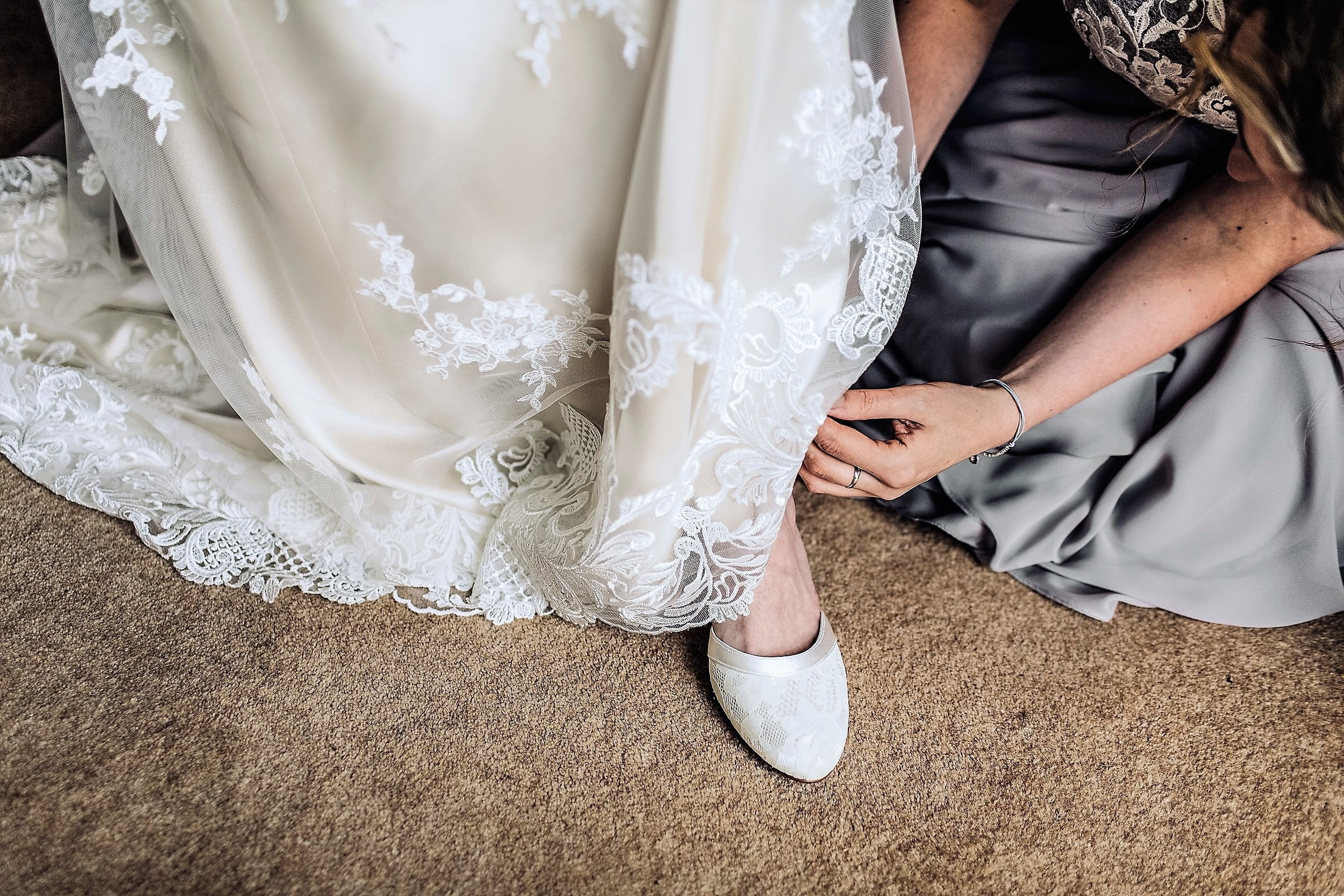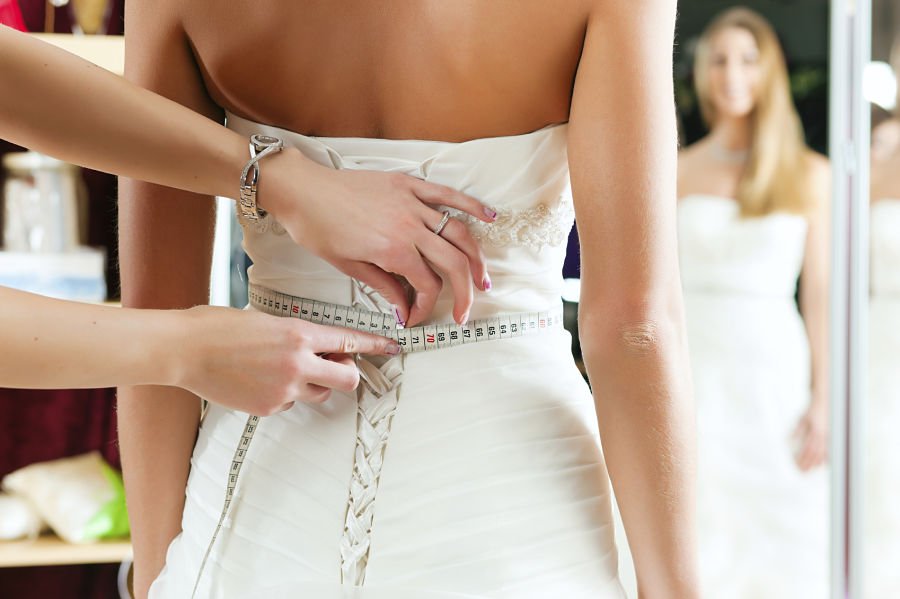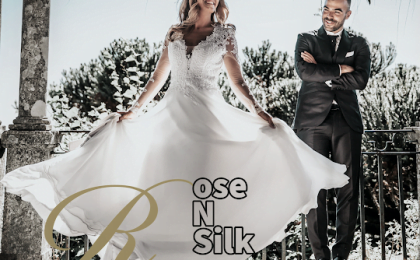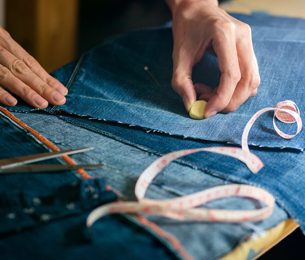Wedding Dress Alterations: Everything You Need to Know

Every bride wants to look and feel her best on her wedding day, and the perfect dress is a crucial part of that. However, even the most beautiful wedding gown may not fit perfectly right off the rack. That’s why wedding dress alterations are essential to achieving the perfect fit. Here’s everything you need to know about wedding dress alterations:
Types of Alterations
The most common types of wedding dress alterations include hemming, taking in or letting out seams, adjusting sleeves, and adding a bustle. Hemming is necessary if the dress is too long or too short, while taking in or letting out seams can be done to adjust the fit of the dress. Sleeve adjustments can change the overall look of the dress, and a bustle is necessary if the dress has a train.
Finding a Professional
It’s essential to find a professional seamstress or tailor to alter your wedding dress. Look for someone with experience in wedding dress alterations, as it’s a specialized skill. Ask for referrals from friends, read reviews, and check their portfolio to make sure they have the necessary skills.
When to Alter
Ideally, you should schedule your alterations at least two months before your wedding day. This allows plenty of time for fittings and any necessary adjustments. Keep in mind that more extensive alterations, such as redesigns or significant resizing, may take longer.
Cost of Alterations
The cost of wedding dress alterations can vary widely, depending on the type of alteration and the complexity of the dress. Hemming or minor adjustments may cost a few hundred dollars, while more extensive alterations can cost over a thousand dollars. Be sure to get a detailed estimate from your seamstress before committing to any alterations.
Personal Touches
Wedding dress alterations can also add personal touches to your gown. Consider adding lace or beading, changing the neckline or adding straps, or even customizing the colour of the dress. Just keep in mind that these alterations may add to the cost and timing of the overall process.
In conclusion, wedding dress alterations are essential to achieving the perfect fit and look for your special day. With the right professional and planning, you can ensure that your wedding dress fits like a glove and makes you feel confident and beautiful as you walk down the aisle.
Wedding gowns are a significant investment, both financially and emotionally. Every bride wants to look and feel her best on her wedding day, and the perfect dress is a crucial part of that. However, even the most beautiful wedding gown may not fit perfectly right off the rack. That’s where wedding gown alterations come in. Here’s everything you need to know about altering your wedding gown:
The Importance of Wedding Gown Alterations
Your wedding day is one of the most important days of your life, and you want to look and feel your best. The perfect wedding gown can make you feel like a princess, but it must fit perfectly to achieve that feeling. Wedding gown alterations are essential to ensure that your dress fits like a glove and looks stunning on your special day.
Types of Wedding Gown Alterations
There are many types of wedding gown alterations that can be done to achieve the perfect fit. The most common alterations include:
Hemming: This is the process of shortening the length of the dress to fit your height and the shoes you’ll be wearing.
Taking in or letting out seams: This is done to adjust the fit of the dress to your body shape.
Adjusting sleeves: This can be done to change the look of the dress or to make it more comfortable to wear.
Adding a bustle: This is necessary if the dress has a train that you want to be able to lift off the ground.
Finding a Professional for Wedding Gown Alterations
It’s essential to find a professional seamstress or tailor to alter your wedding gown. Look for someone with experience in wedding gown alterations, as it’s a specialized skill. Ask for referrals from friends, read reviews, and check their portfolio to make sure they have the necessary skills.
When to Schedule Alterations
It’s important to schedule your wedding gown alterations in advance to ensure that there is enough time for fittings and any necessary adjustments. Ideally, you should schedule your first fitting at least two months before your wedding day, with a final fitting a few weeks before the wedding. Keep in mind that more extensive alterations, such as redesigns or significant resizing, may take longer.
Cost of Wedding Gown Alterations
The cost of wedding gown alterations can vary widely, depending on the type of alteration and the complexity of the dress. Hemming or minor adjustments may cost a few hundred dollars, while more extensive alterations can cost over a thousand dollars. Be sure to get a detailed estimate from your seamstress before committing to any alterations.
Personal Touches
Wedding gown alterations can also add personal touches to your dress. Consider adding lace or beading, changing the neckline or adding straps, or even customizing the colour of the dress. Just keep in mind that these alterations may add to the cost and timing of the overall process.

In conclusion, wedding dress alterations are essential to achieving the perfect fit and look for your special day. With the right professional and planning, you can ensure that your wedding dress fits like a glove and makes you feel confident and beautiful as you walk down the aisle.









